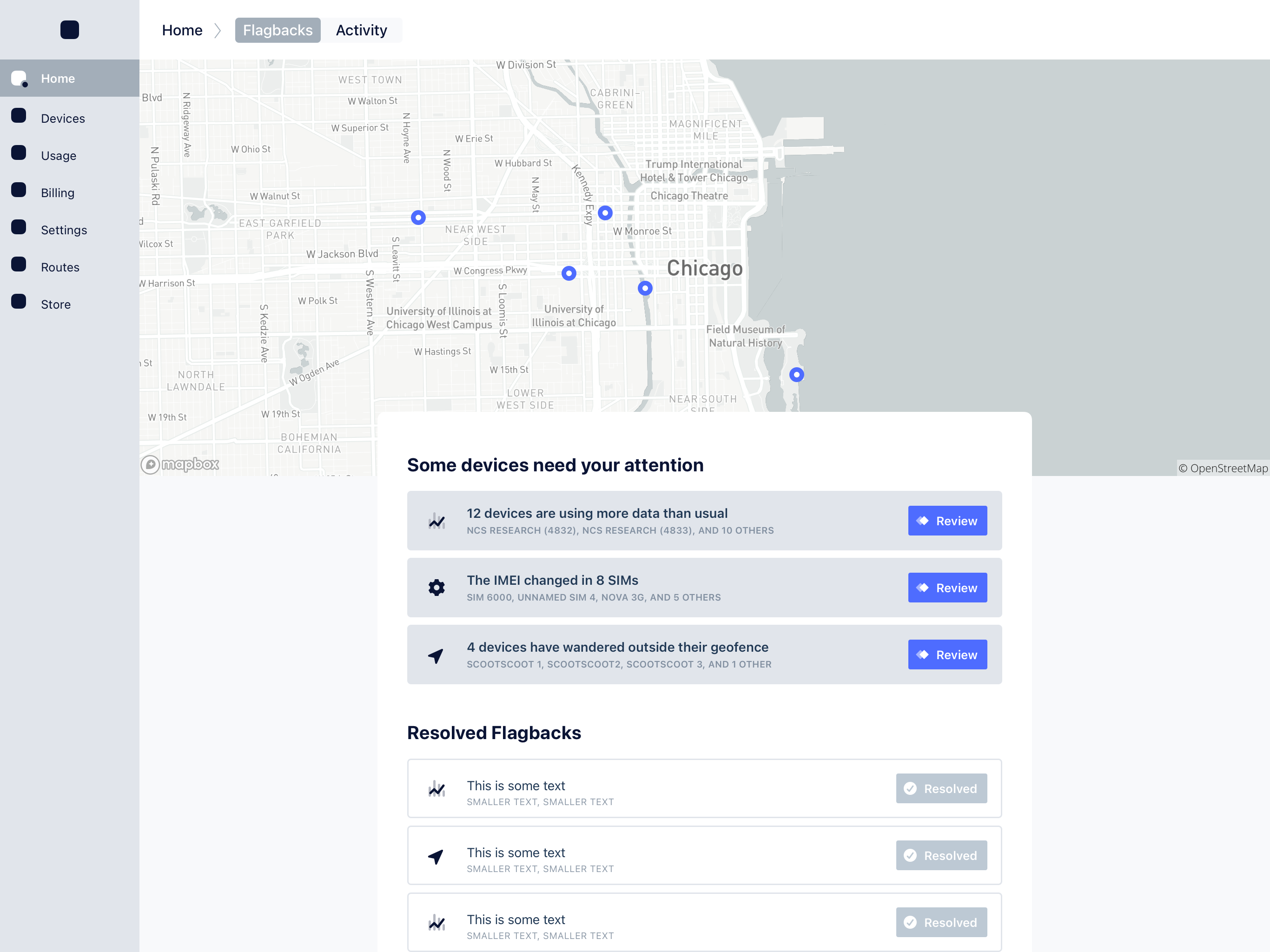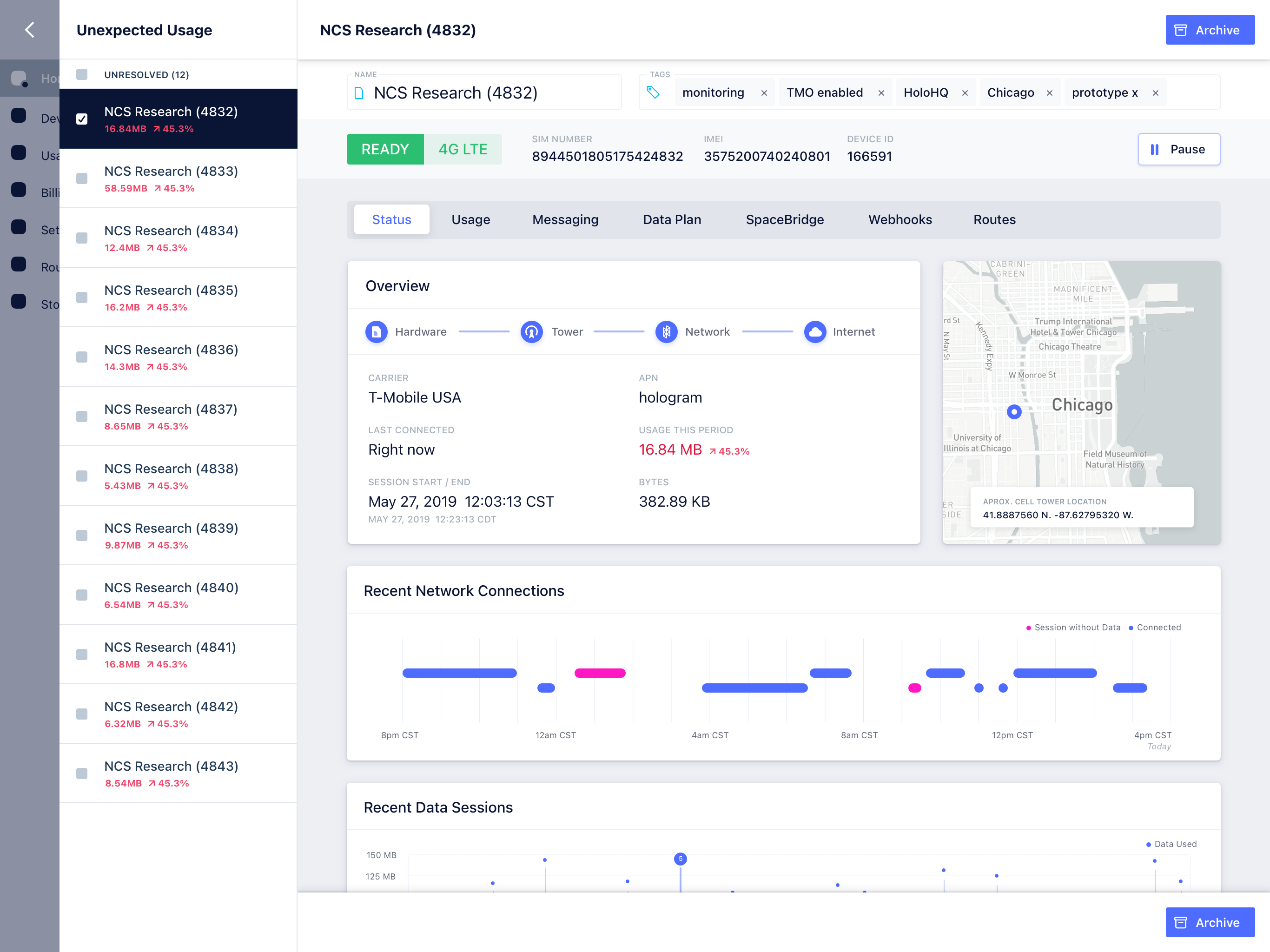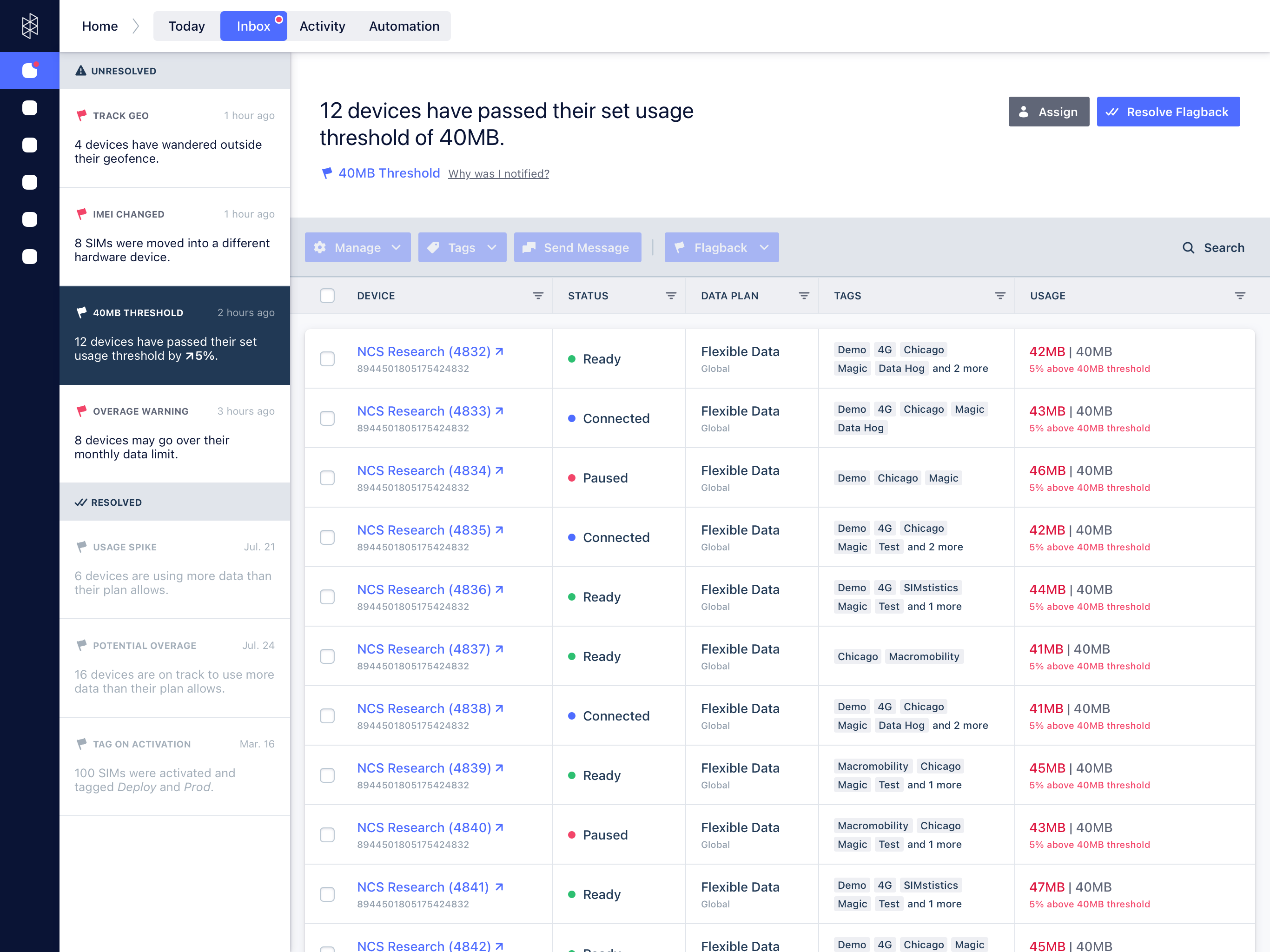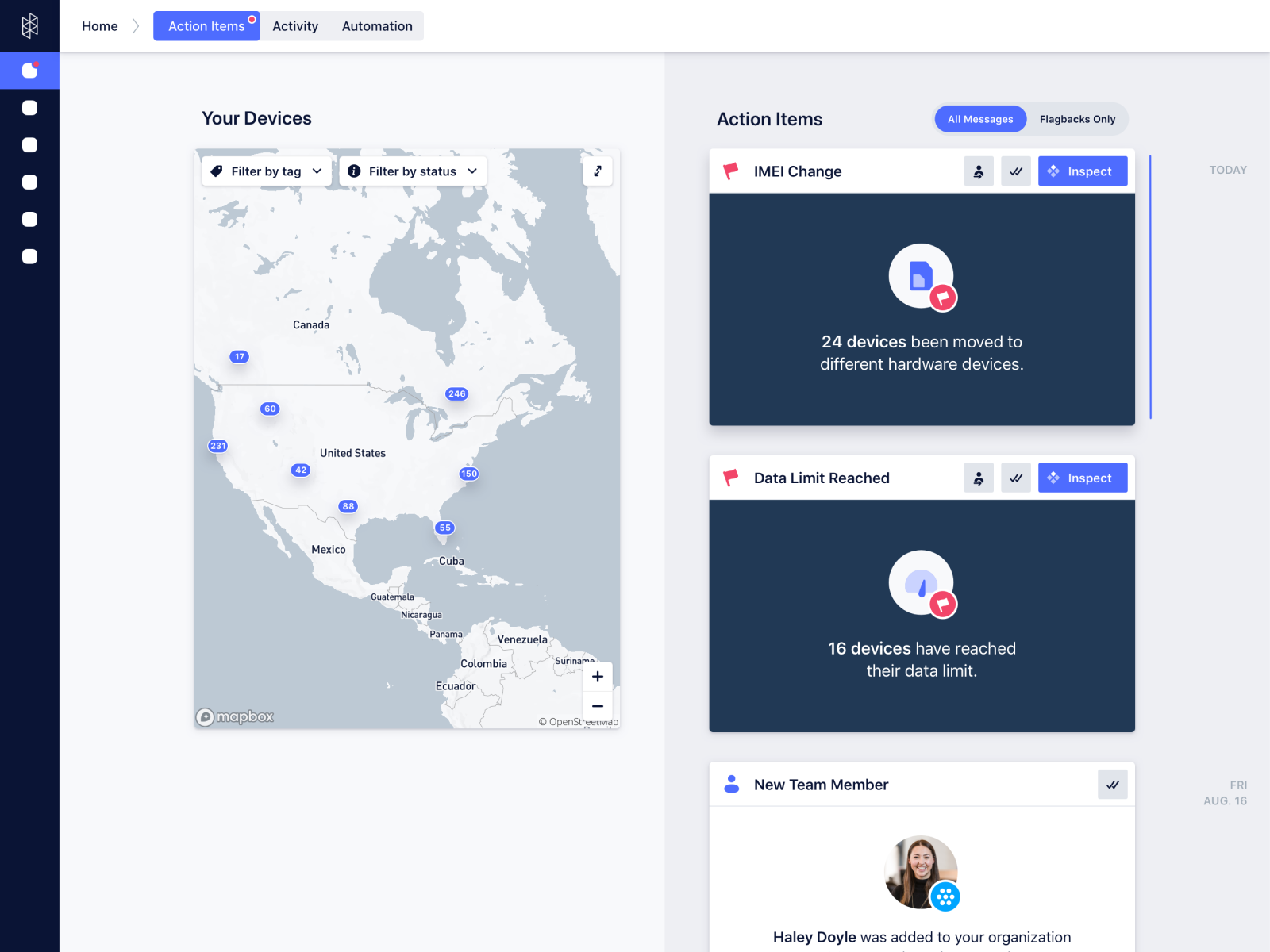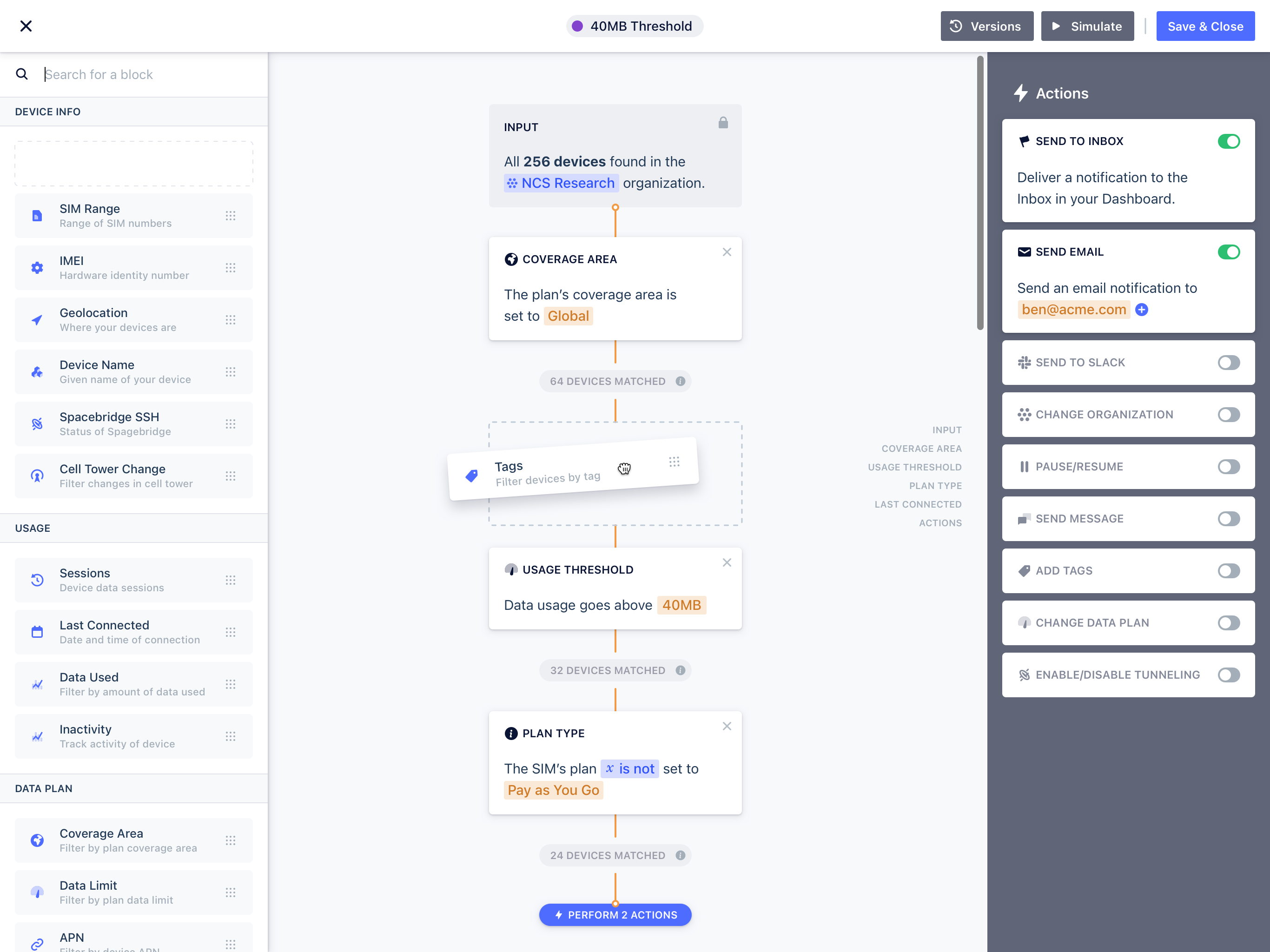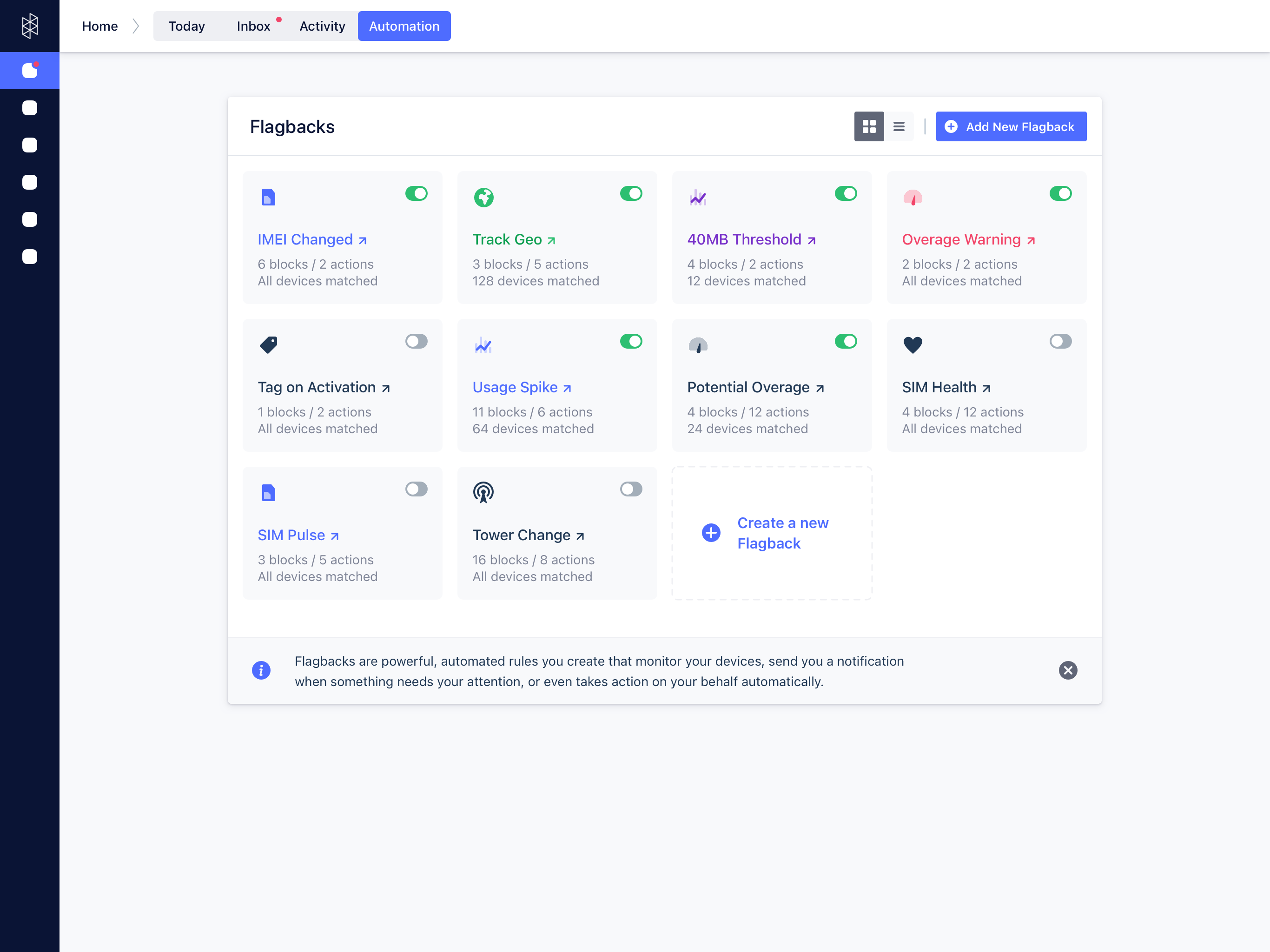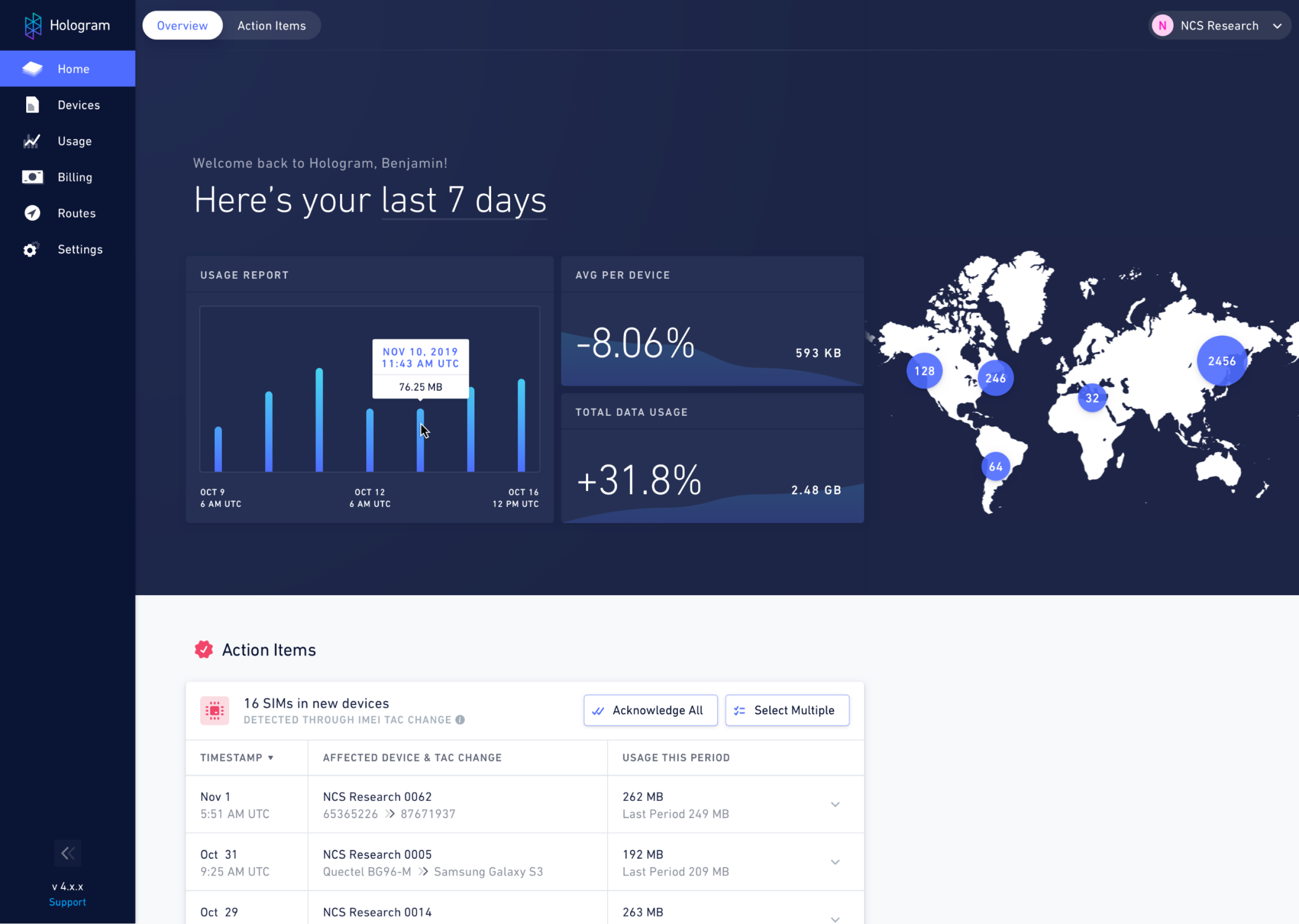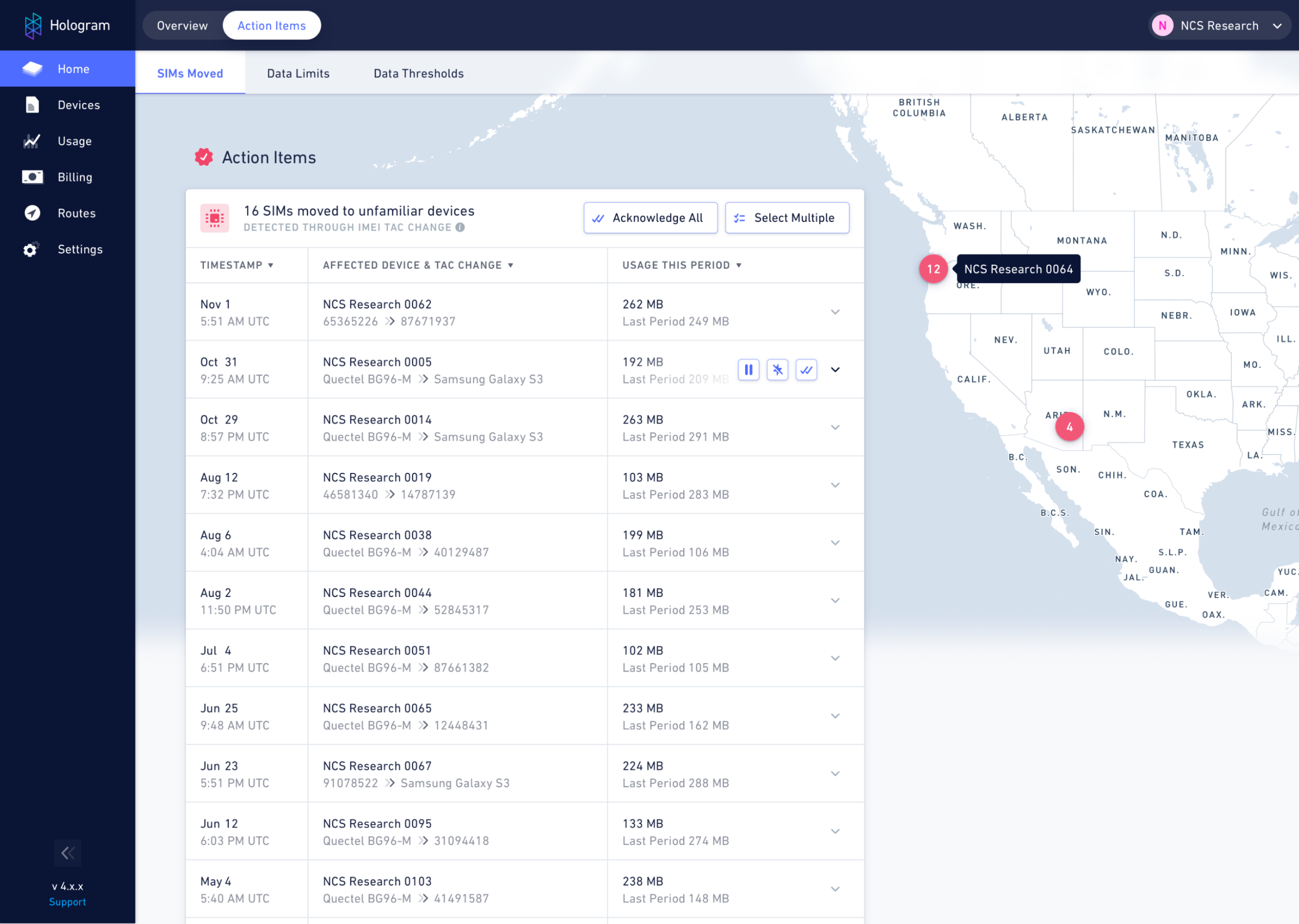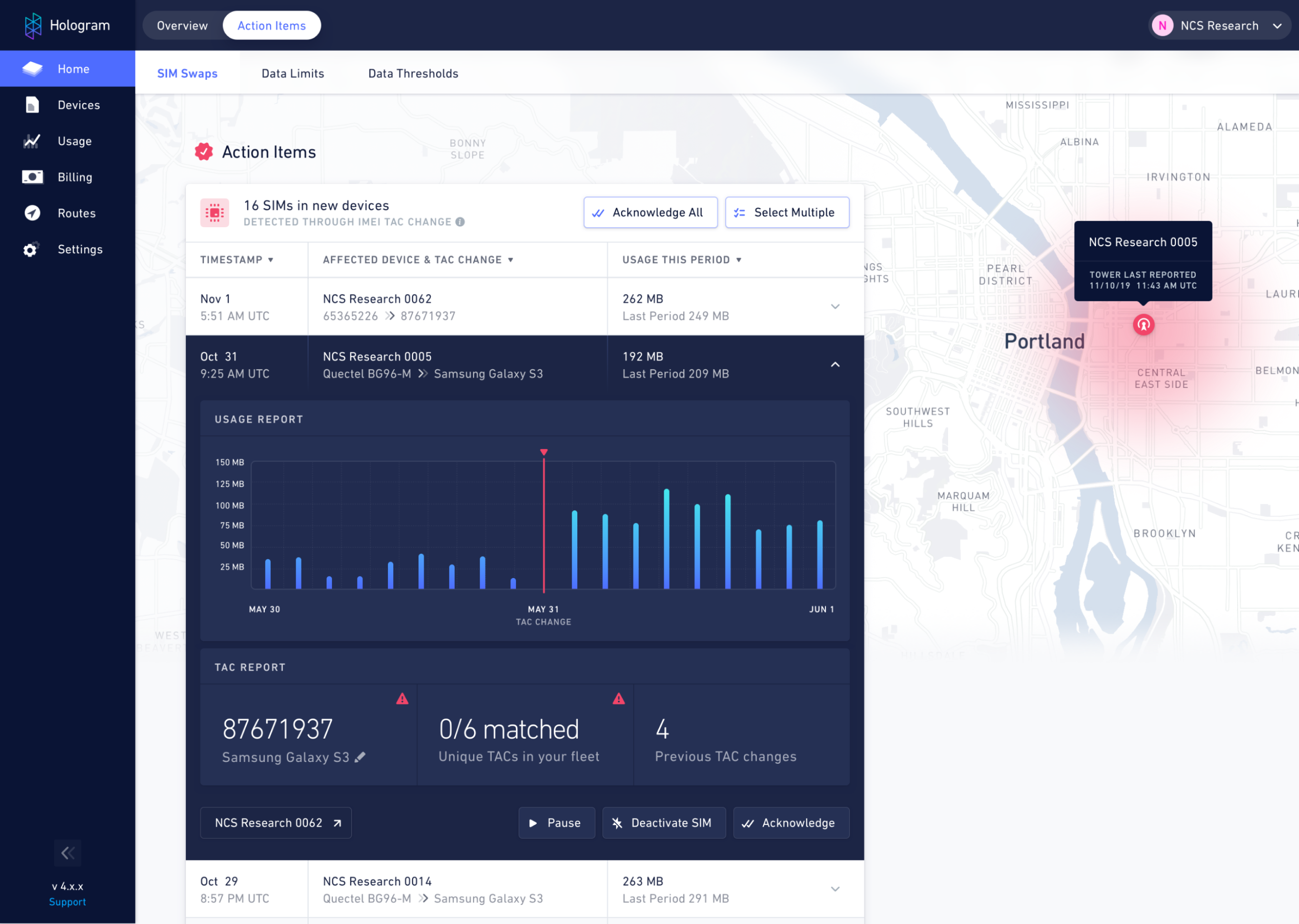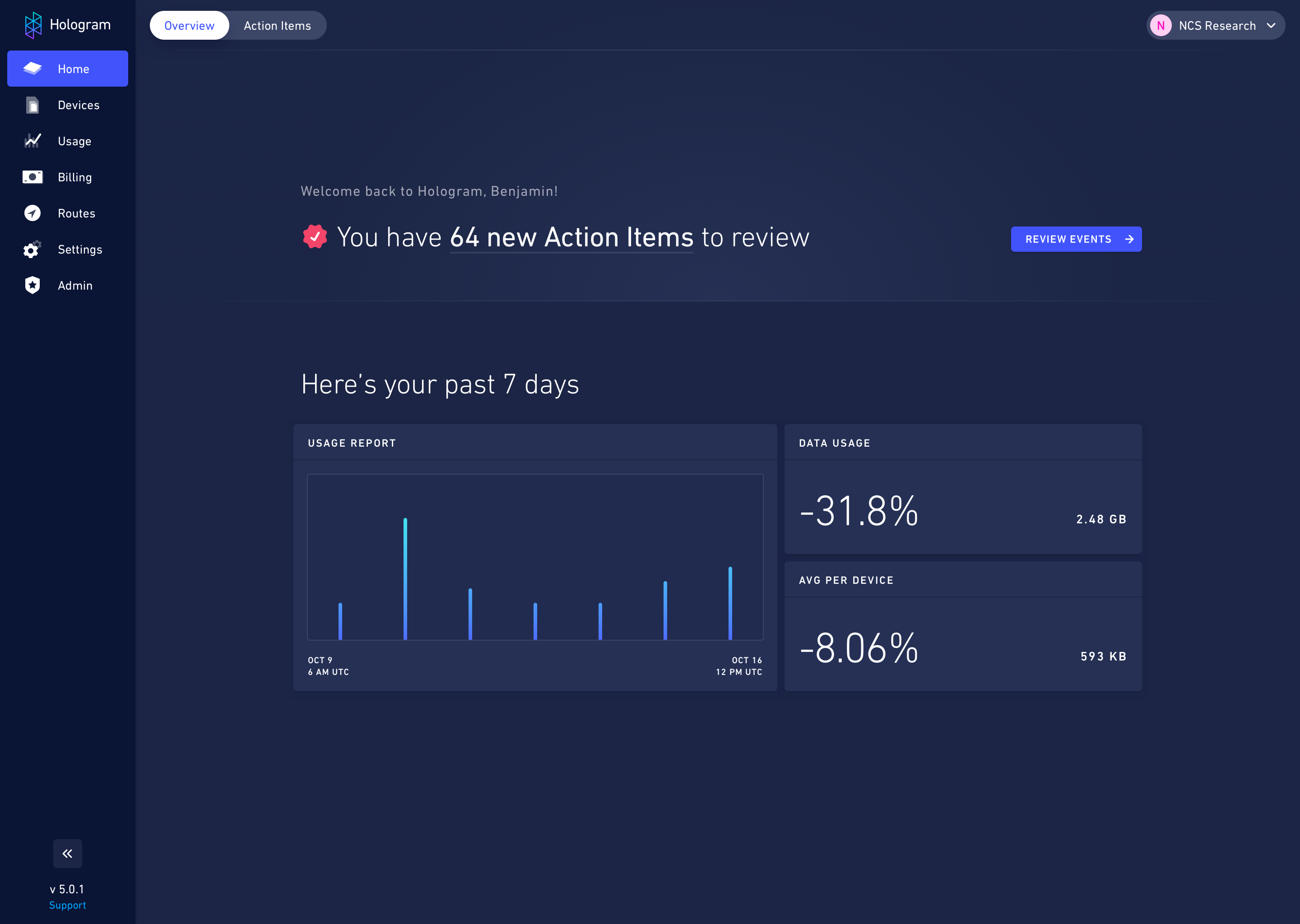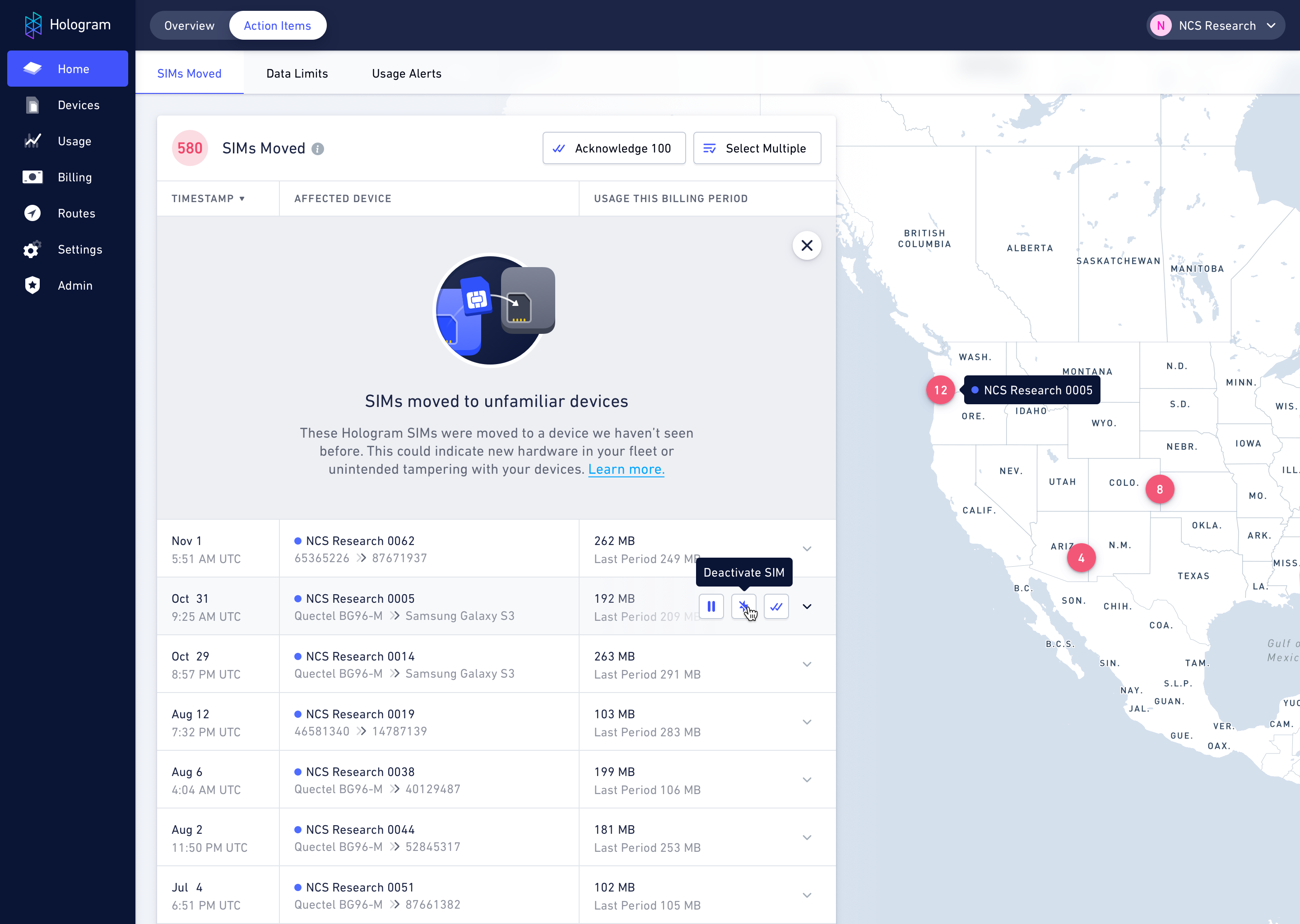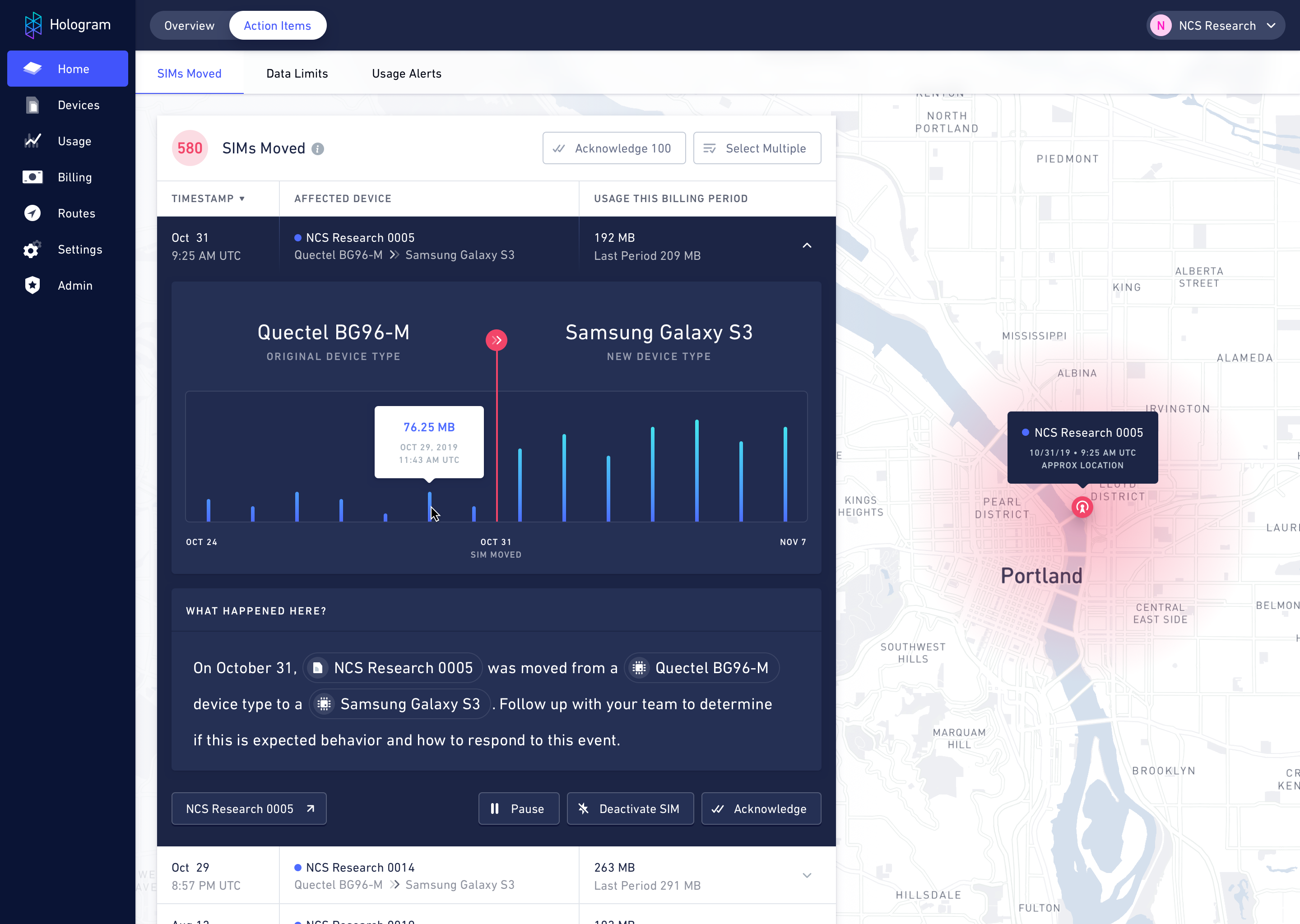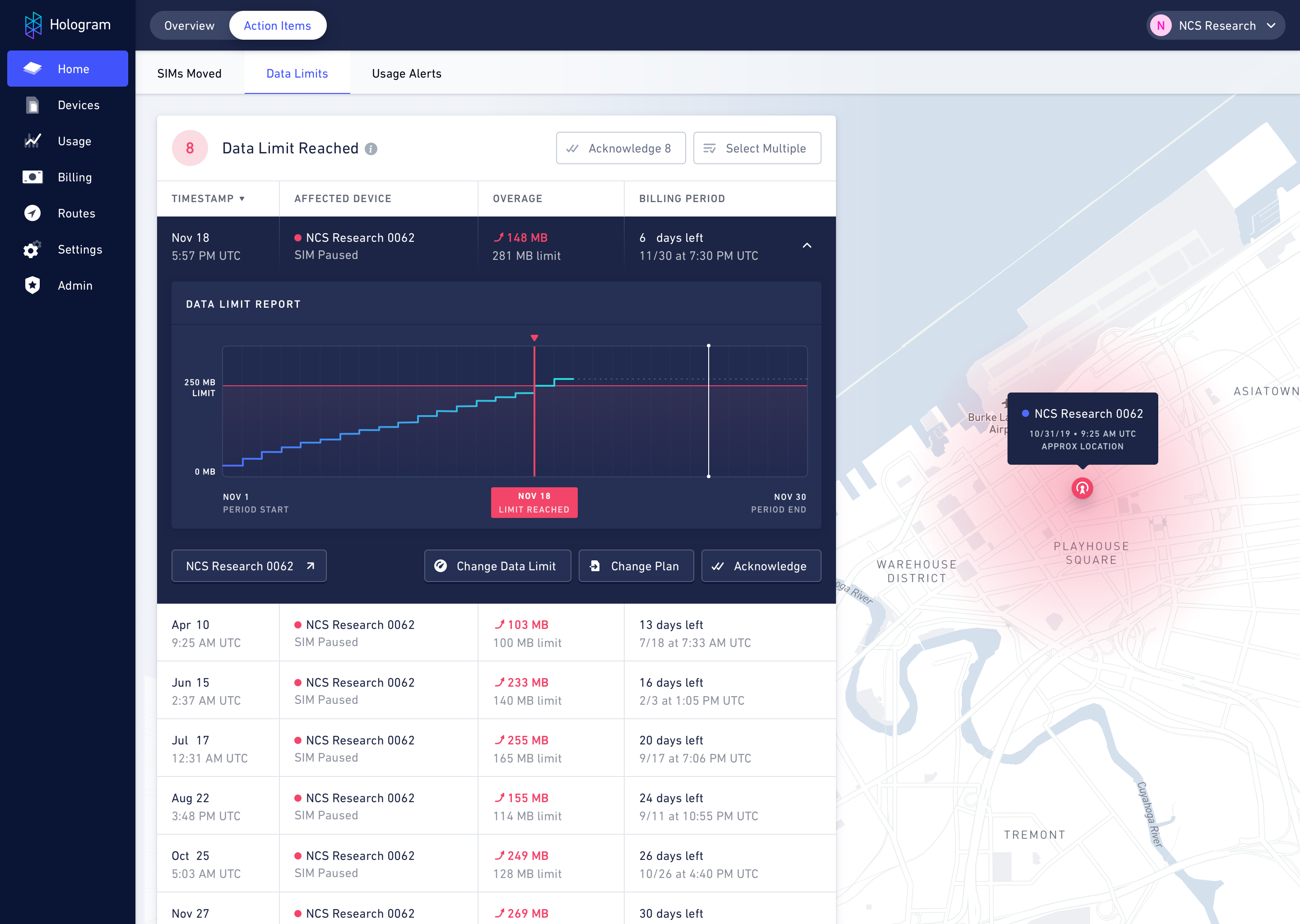
Turning connectivity into software
Hologram is a cellular IoT company where I worked as Director of Product Design. With Hologram's technology, customers can deploy connected hardware devices across 470+ carriers in 200+ countries—all on a single SIM. Of course, managing tens-of-thousands of devices using a traditional UI is cumbersome.
Inflight is Hologram’s proactive alerting and manage-by-exception tool, designed to help large orgs and enterprise customers better manage their large deployments at scale.
Psst. I know what you're here for. Jump ahead to the final designs.
Project Summary
Hologram’s largest customers need a better way of using our platform at scale. Organizations with 10 or 10,000 devices had the same product experience, and it was nearly impossible to identify problems as they were happening.
In the end, 74 organizations participated in the early-access program, including Hologram's top revenue-driving customers. The Sales team commonly uses Inflight to close deals and sell it as a premium value-add.
Case in point: Inflight flagged 885 of our largest customer’s devices as fraudulent, amounting to an estimated total savings of over $100,000 for that organization alone.

User research
Inflight was a full-stack design effort, starting with extensive on-site user research across 15 customers and industry professions. During discovery, we wanted to learn:
- How teams manage their cellular product and deployment
- Who is responsible for device ownership
- What insights customers need and how Inflight can best surface them

✨ Product opportunity
Our research found the following to be true:
- IoT ownership is fractured: Many orgs are resistant to hiring a role dedicated to managing connectivity because it’s inherently a cross-functional position, requiring deep technical understanding and a POV on operations and finance.
- Customers are reactive: Customers are reactive when it comes to their fleets and rely solely on historical data. They don’t learn about device issues until it’s too late—and often after their monthly bill.
- Time is precious: Customers see us as a time-saver compared to competitors. They don’t want to worry about Hologram—they just want it to work.
Research taught us Inflight would be a success if we could reduce time in app by summarizing data, proactively alerting users to what needs their attention, and recommend solutions.
Concepting
My build began with high-fidelity wireframes and prototypes for user testing, including a summarized list of exceptions with geographical context, referencing an email inbox metaphor for familiarity, and a card activity feed.
I also explored complex configuration tools with a custom workflow builder UI. Extensive user testing highlighted what worked best.
Refined concept
I took our initial research findings and applied them to a second, more refined round of iteration.
We found users really appreciated our early concept's summary view of fleets, so we expanded it to a “Last 7 Days” overview visible under a new Home tab. This is where a user arrives when they first log into the Dashboard, a softer landing zone compared to the previous devices table.
I introduced "zoom levels" that changed the amount of detail and context surfaced based on a user's desired complexity. The first zoom level shows a list of devices with exceptions. If a user want more detail, they can easily click into a specific device for contextual reporting and resolution suggestions.
Launching Inflight
After further refinement, we launched Inflight's early access program. The final designs were a refinement on previous concepts and included new ways to onboard users to the product.
The research showed us that users, even those with a technical background in IoT, have a hard time unpacking all its acronyms and initialisms. So, I introduced educational panels to explain each concept for the first time.
I brought this educational approach into the device details panel, too, with a new “What happened here?” card that explains what happened to your device.

Post-launch and look ahead
Follow-up research with early access testers drove us to uncover a few pieces missing from the Inflight equation. Using Hologram was primarily a single-player experience, but when it comes to resolving problematic devices it's a multiplayer game.
To that end, I explored how Inflight could be more collaborative and support in-app communications, task assignments, and incident auditing.
